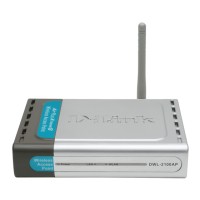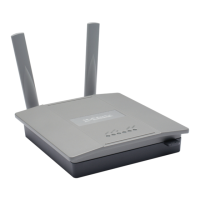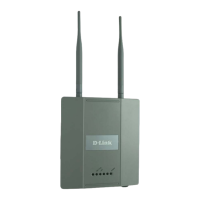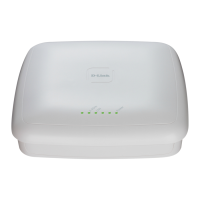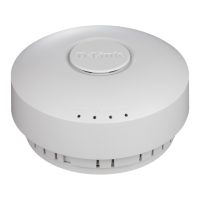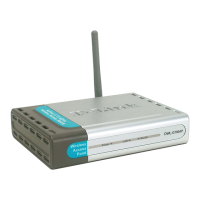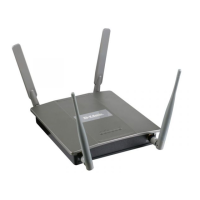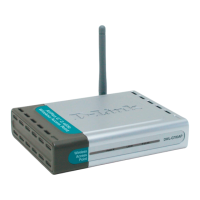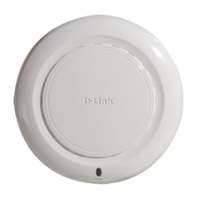Unied Access Point Administrator’s Guide
Page 97
January 2015
Section 8 - Conguring Client Quality of Service (QoS)
Field Description
Class Map Name Select name of the class to congure.
Use the elds in the Match Criteria Conguration area to match packets to a class. Select
the check box for each eld to be used as a criterion for a class and enter data in the related
eld. You can have multiple match criteria in a class.
Note: The match criteria elds that are available depend on whether the class map is an
IPv4 or IPv6 class map.
Match Every Select Match Every to specify that the match condition is true to all the parameters in an L3
packet.
All L3 packets will match an Match Every match condition.
Protocol Select the Protocol eld to use an L3 or L4 protocol match condition based on the value of
the IP Protocol eld in IPv4 packets or the Next Header eld of IPv6 packets.
Once you select the eld, choose the protocol to match by keyword or enter a protocol ID.
Select From List
Select one of the following protocols from the list:
•) IP
•) ICMP
•) IPv6
•) ICMPv6
•) IGMP
•) TCP
•) UDP
Match to Value
To match a protocol that is not listed by name, enter the protocol ID.
The protocol ID is a standard value assigned by the IANA. The range is a number from 0 –
255.
IPv4 Class Maps
Source IP Address Select this eld to require a packet’s source IP address to match the address listed here.
Enter an IP address in the appropriate eld to apply this criteria.
Source IP Mask Enter the source IP address mask.
The mask for DiffServ is a network-style bit mask in IP dotted decimal format indicating
which part(s) of the destination IP Address to use for matching against packet content.
A DiffServ mask of 255.255.255.255 indicates that all bits are important, and a mask of
0.0.0.0 indicates that no bits are important. The opposite is true with an ACL wild card
mask. For example, to match the criteria to a single host address, use a DiffServ mask of
255.255.255.255. To match the criteria to a 24-bit subnet (for example 192.168.10.0/24), use
a mask of 255.255.255.0.
Destination IP
Address
Select this eld to require a packet’s destination IP address to match the address listed
here. Enter an IP address in the appropriate eld to apply this criteria.
Destination IP Mask Enter the destination IP address mask.
The mask for DiffServ is a network-style bit mask in IP dotted decimal format indicating
which part(s) of the destination IP Address to use for matching against packet content.
A DiffServ mask of 255.255.255.255 indicates that all bits are important, and a mask of
0.0.0.0 indicates that no bits are important. The opposite is true with an ACL wild card
mask. For example, to match the criteria to a single host address, use a DiffServ mask of
255.255.255.255. To match the criteria to a 24-bit subnet (for example 192.168.10.0/24), use
a mask of 255.255.255.0.
IPv6 Class Maps
Source IPv6
Address
Select this eld to require a packet’s source IPv6 address to match the address listed here.
Enter an IPv6 address in the appropriate eld to apply this criteria.
Source IPv6 Prex
Length
Enter the prex length of the source IPv6 address.
Destination IPv6
Address
Select this eld to require a packet’s destination IPv6 address to match the address listed
here. Enter an IPv6 address in the appropriate eld to apply this criteria.
Destination IPv6
Prex Length
Enter the prex length of the destination IPv6 address.
IPv6 Flow Label Flow label is 20-bit number that is unique to an IPv6 packet. It is used by end stations to
signify quality-of-service handling in routers (range 0 to 1048575).
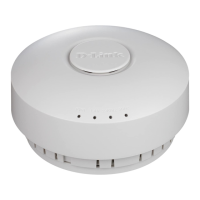
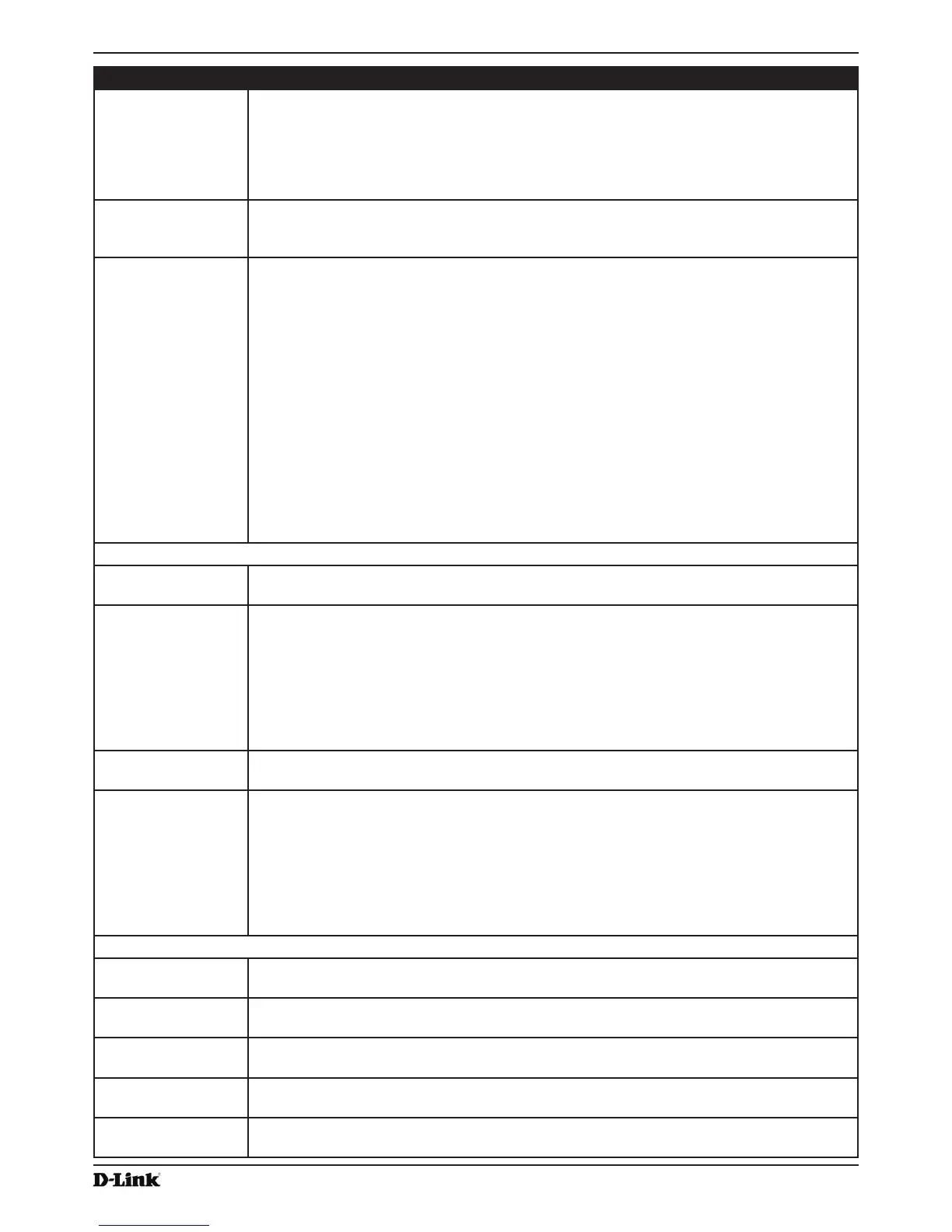